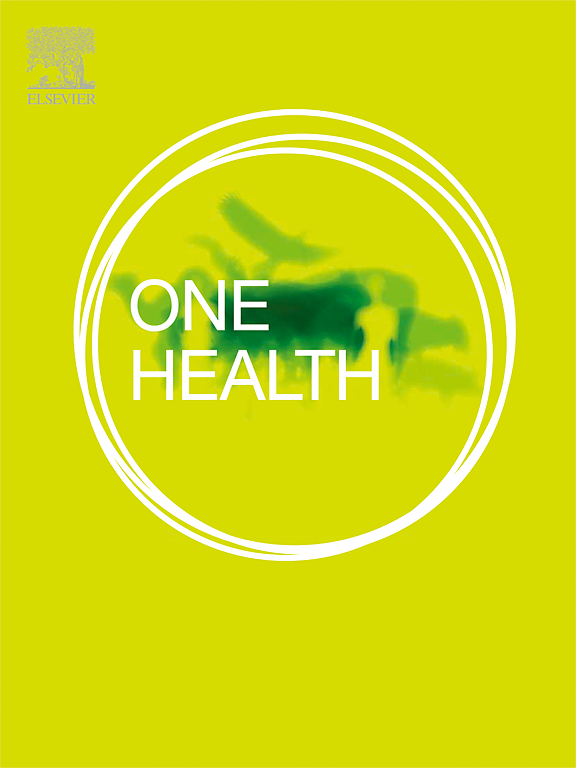First isolation of the Sindbis virus in mosquitoes from southwestern Spain reveals a new recent introduction from Africa
IF 4.1
2区 医学
Q1 INFECTIOUS DISEASES
引用次数: 0
Abstract
Sindbis virus (SINV), is an Alphavirus of the family Togaviridae. This zoonotic arbovirus is transmitted by mosquitoes, primarily from the Culex genus, with bird species acting as amplifying vertebrate hosts. Occasionally it can also affect humans that are accidental hosts. SINV genotype I (SINV-I) has been isolated in mosquitoes and birds in South Africa and Northern Europe, producing fever outbreaks. In the last decades, there were several detections of SINV in Europe. In 2022, during the West Nile virus (WNV) mosquito surveillance program in Andalucía (Spain) implemented by the regional health administration, we detected the presence of both SINV and WNV in a Culex perexiguus pool, representing the first detection of SINV in Spain. After this finding, we screened 1149 mosquito pools to determine the status of SINV circulation in western Andalucía. We identified for the first time the presence of SINV in five different mosquito species. Culex perexiguus presented the highest infection rate by SINV. In addition, SINV was geographically widespread and distributed in four out of the five Andalucía's provinces studied, with Cadiz presenting the highest infection rate. All SINV genomes from Southwestern Spain characterised in this study belonged to SINV-I, previously detected in Europe and Africa. These isolated SINV-I strains presented low molecular variation among them and in the phylogenomic analyses they formed a monophyletic group that clustered with strains from Algeria and Kenya. These results suggest that, around 2017, a single new SINV introduction into the European continent occurred, probably from Northern (Algeria) or Central Africa.

首次从西班牙西南部的蚊子中分离出Sindbis病毒,揭示了最近从非洲引入的新病毒。
信德病毒(SINV)是托加病毒科的一种甲病毒。这种人畜共患虫媒病毒主要由蚊子传播,主要来自库蚊属,鸟类作为扩增的脊椎动物宿主。偶尔它也会影响作为意外宿主的人类。在南非和北欧的蚊子和鸟类中分离出SINV基因型1 (SINV- 1),造成发热暴发。在过去的几十年里,欧洲有几次检测到SINV。2022年,在西班牙Andalucía地区卫生管理部门实施的西尼罗病毒(WNV)蚊虫监测项目中,我们在一个库蚊池中检测到SINV和西尼罗病毒,这是西班牙首次检测到SINV。在此基础上,我们筛选了1149个蚊池,以确定西部Andalucía SINV传播状况。我们首次在5种不同的蚊子中鉴定出SINV的存在。恙蚊感染率最高。此外,SINV在地理上很广泛,分布在Andalucía研究的五个省中的四个省,加的斯的感染率最高。本研究中来自西班牙西南部的所有SINV基因组都属于先前在欧洲和非洲检测到的SINV- 1。这些分离的sinv - 1菌株在它们之间表现出低分子变异,在系统基因组分析中,它们与来自阿尔及利亚和肯尼亚的菌株聚集在一起形成了一个单系群。这些结果表明,在2017年左右,欧洲大陆发生了一次新的SINV引入,可能来自北部(阿尔及利亚)或中非。
本文章由计算机程序翻译,如有差异,请以英文原文为准。
求助全文
约1分钟内获得全文
求助全文
来源期刊

One Health
Medicine-Infectious Diseases
CiteScore
8.10
自引率
4.00%
发文量
95
审稿时长
18 weeks
期刊介绍:
One Health - a Gold Open Access journal.
The mission of One Health is to provide a platform for rapid communication of high quality scientific knowledge on inter- and intra-species pathogen transmission, bringing together leading experts in virology, bacteriology, parasitology, mycology, vectors and vector-borne diseases, tropical health, veterinary sciences, pathology, immunology, food safety, mathematical modelling, epidemiology, public health research and emergency preparedness. As a Gold Open Access journal, a fee is payable on acceptance of the paper. Please see the Guide for Authors for more information.
Submissions to the following categories are welcome:
Virology,
Bacteriology,
Parasitology,
Mycology,
Vectors and vector-borne diseases,
Co-infections and co-morbidities,
Disease spatial surveillance,
Modelling,
Tropical Health,
Discovery,
Ecosystem Health,
Public Health.
 求助内容:
求助内容: 应助结果提醒方式:
应助结果提醒方式:


